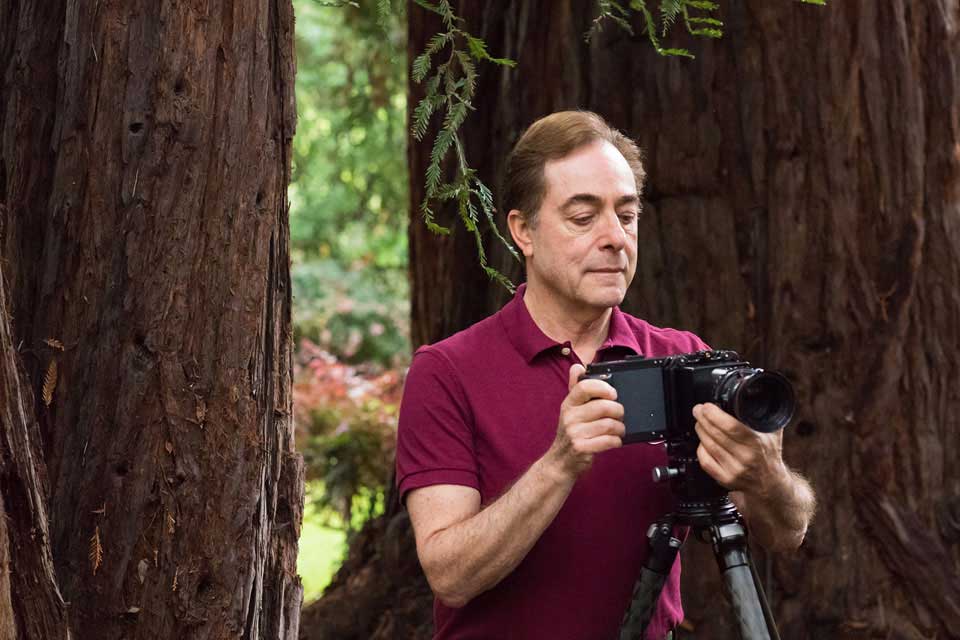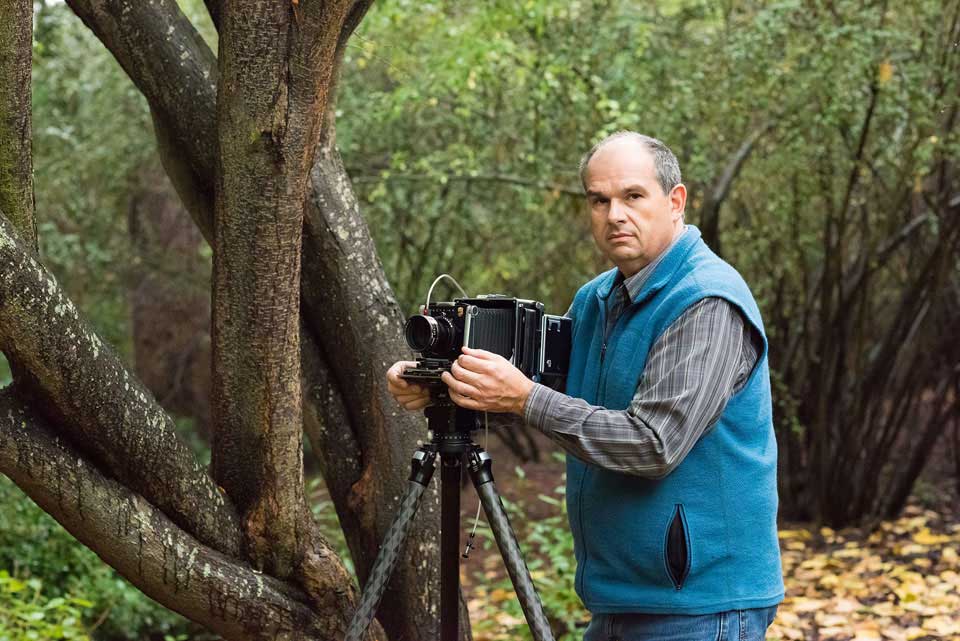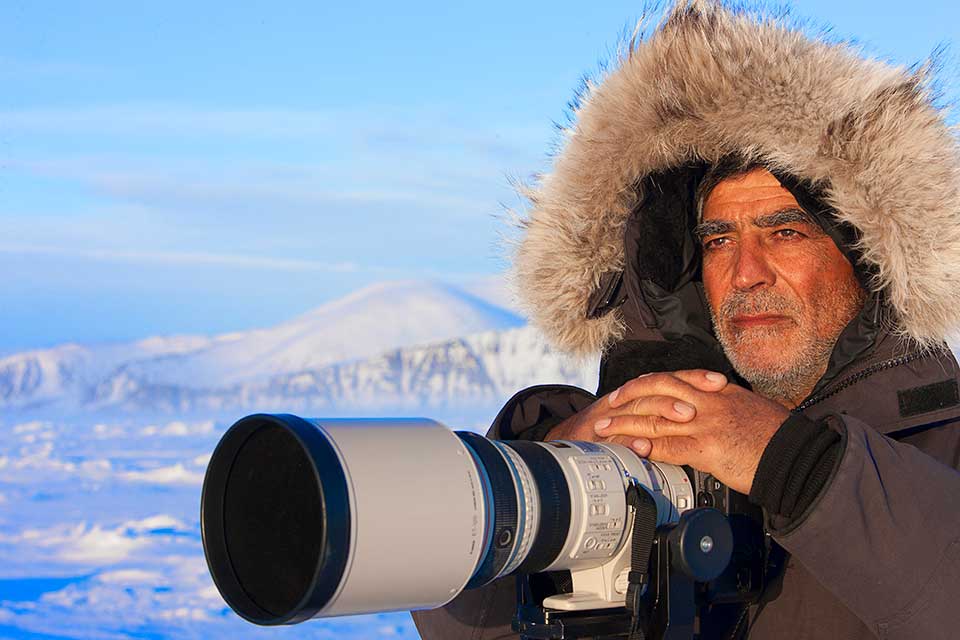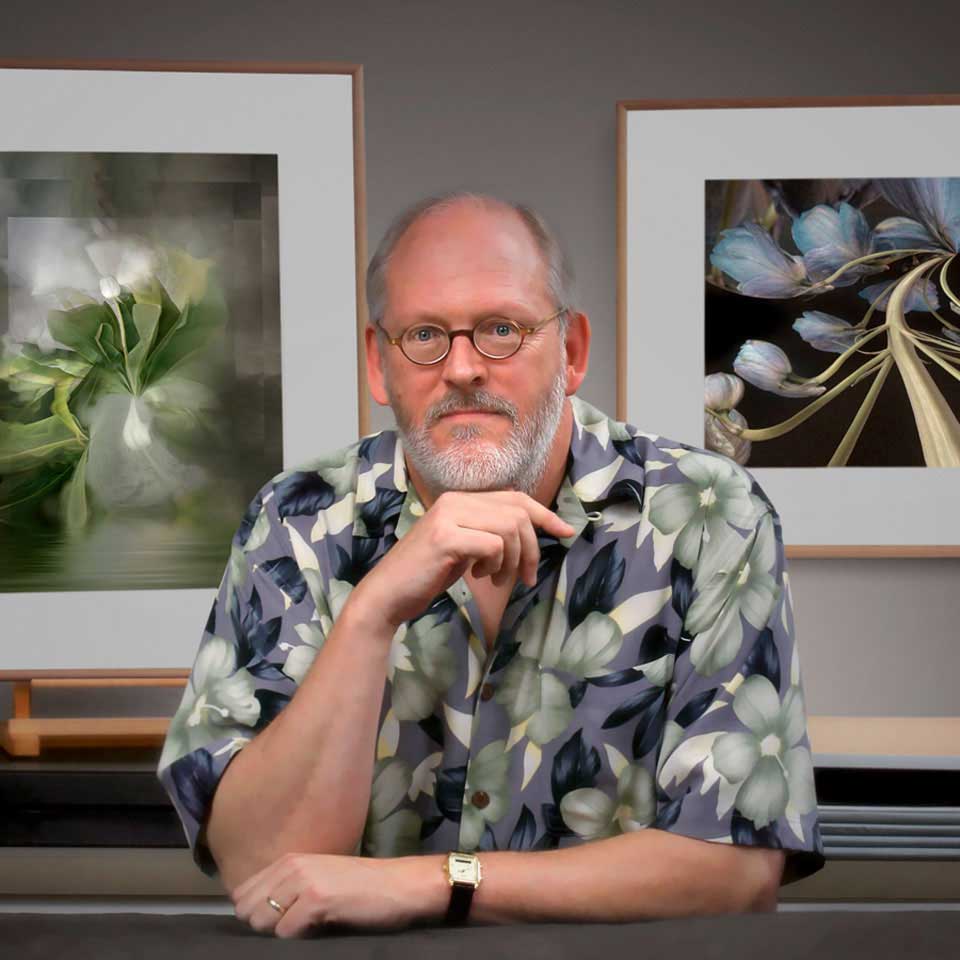
Photo Aesthetics was founded by Mark Dubovoy and James Taskett. Between them they have over 100 years of extensive experience in all aspects of Photography.
About Photo Aesthetics
Photo Aesthetics goal is to focus on the most important element of Photography: The Image. As such, this website will concentrate on the artistic as well as the technical aspects of all things that can help improve images. Since it is critical to observe and understand the work and the methodology of the masters of the medium, the work, philosophy and techniques of outstanding image makers will also be periodically featured. The same applies to the lives and work of scientists, engineers, technicians, designers and executives that help make our beloved art and craft possible.
Since Photo Aesthetics is strictly dedicated to the highest quality images possible, it is natural that we will gravitate towards the highest quality tools available to photographers. Most of these tools, whether they be hardware, software or something else are likely to be advanced tools at the top of the quality and functionality pyramid. More often than not, these tools are likely to be expensive and require a certain level of skill on the part of the photographer. This is simply the nature of the craft.
Photo Aesthetics adheres to the strictest standards in journalism. We make every effort to insure that all factual information is accurate and correct. We enforce the highest standards of honesty and objectivity. While we may on occasion be privy to confidential information, we will never disclose it unless we receive explicit clearance directly from the source.
We enforce the highest standards of respect and decorum. While we understand that individual opinions and experiences may differ, and while we welcome varied opinions on any subject, we will not tolerate anyone making disparaging, insulting or misleading remarks in our comments section.
We have no agenda other than to try to make a meaningful contribution to the understanding of Photography and the potential improvement of our images. We will always report things as we see them and we will never recommend a product we would not use ourselves.
Mark Dubovoy
James Taskett

Ethics
Photo Aesthetics founding principle is based on professionalism, integrity and objectivity. Photo Aesthetics is not beholden, nor is it influenced by any individual, company, specific product, brand, financial pressure nor any other third party or external circumstance.
We are neutral by design. Anything and everything we publish comes strictly from our own knowledge, tests and observations.
While we try to be totally objective and dispassionate, every human being has some biases and we clearly have our own opinions about some things. On the other hand, facts are facts and our goal is to report the facts with strict accuracy.
We adhere to the highest standards of integrity and transparency.
Individuals that are not part of the Photo Aesthetics team and are allowed to contribute content, agree to adhere to the same ethical principles.
Our revenue policy is completely neutral. Any responsible and ethical party that wishes to advertise with us is welcome.
The design of the website is such that marketing messages appear in some pages served to the users in random fashion. It is important to point out that in a small number of cases this may result in a marketing message for a product or brand to appear in an article about said product or brand. If this occurs, it is purely a coincidence due to the random nature of the system and it is likely to occur to some users but not to others.
We will never allow an advertiser to influence us in any way, shape or form.
Mark Dubovoy
James Taskett


Mark Dubovoy, Founder and Editor
Mark Dubovoy is a well-known photographer, educator, writer and businessman.
His breathtaking images are a unique combination of impeccable aesthetics, a deep love for nature and flawless technique.
His unique background, starting in the darkroom as a child, combined with a long-term career in science and technology, are clearly evident in his work. He is a master printer in many traditional and digital methods and considers printing an integral part of the creative process.
Mark’s love of the technical aspects of photography is only exceeded by his passion to reveal and document the natural landscape, the hidden beauty in objects and the personalities of wild animals. While his main area of focus is landscape photography, he has also completed a number of projects photographing the animals of Africa, rare automobiles and images of flowers.
His photographs are included in a number of private collections, as well as the permanent collections of major Museums, including the San Francisco Museum of Modern Art, the Monterey Art Museum, the Berkeley Art Museum, the Museum of Modern Art in Nanao Japan and the Museum of Contemporary Art in Mexico City. His images have also been published in a number of magazines and books, including the Best of Photography Annual, International Edition.
Mark is a highly regarded technical expert in many aspects of photography. As such, he has been and continues to be an advisor, consultant and early tester for a number of manufacturers of high quality photographic products.
Mark has also been a major contributor to a number of print and online publications. He has been an instructor and a leader of photographic expeditions and workshops around the world, including places like Antarctica, Iceland, Africa, Mexico and others.
Prior to founding Photo Aesthetics, Mark was a regular contributor to PHOTO Technique magazine and Editor-at-Large of The Luminous Landscape.
Mark holds a BS degree in Physics from the National University of Mexico, and MA and Ph.D degrees in Physics from the University of California at Berkeley.
In addition to his involvement in photography, he has had a long and successful career in science, technology and early stage companies in Silicon Valley.


Jim Taskett, Founder and Publisher
Like many photographers, Jim started very young learning about cameras, the darkroom and experimenting with various photographic processes. While in junior high school, he was a regular photographer for multiple regional newspapers specializing in sports, event and political photography.
By the time he reached high school, he had been awarded a number of national awards including the prestigious New York State Press Association 1st prize in Sports photography. Additionally, Jim worked with Webster Fire as Photo-1, responding to fire and other calls, documenting and assisting with arson investigations.
Jim attended Rochester Institute of Technology majoring in BioMedical Photography, a program specializing in Macro/Micro and Scientific Imaging Technology. Shortly after completing his internship at Stanford Medical Center, Jim returned to Stanford University as a staff photographer and soon moved into the director’s position for the Visual Arts Services department (which included a large staff of photographers, medical illustrators and graphics artists, video and motion pictures, a print center, and a large photographic lab). Over three decades at Stanford University, Jim enjoyed working with an extremely talented and professional staff on numerous projects including documentary films of unique surgeries, such as specialized heart transplants and conjoined twins separations. He also worked on the preservation and the re-imaging of hundreds of thousands of three-dimensional transparencies.
Jim was instrumental in the development of Retinal Nerve Fiber Layer Photography, a diagnostic technique for early detection of Glaucoma, with Dr. Lewis Roloff.
Jim has also consulted and provided technical assistance for clients at Bear Images Photographic based in Palo Alto, California (founded and owned by Karla Johnson). These projects included the establishment of new studios from Shanghai to Berlin, digitizing Mozart’s original autographs and frame-by-frame digital preservation of rare and significant major motion picture films. His current projects include close working relationships with major photographic studios such as The Gap, Banana Republic, Apple Inc., and others.
Jim has enjoyed close partnerships with leading manufacturers of photographic products throughout the world. For number of years he was an active member of the Dealer Advisory Board for Eastman Kodak Professional. In addition, he has worked very closely with digital photography manufacturers and was instrumental in the development of the Achromatic Plus Digital Back; manufactured specifically for Bear Images by Phase One.
For many years Jim has specialized in scientific photography including macro photography, photo-microscopy, diagnostic imaging, as well as specialized spectral imaging for aerial photography, but at the same time he deeply enjoys fine art photography ranging from landscape photography to the use of unique photographic tools such as pinhole cameras and large-format technical cameras.
Jim has taught numerous photographic workshops, at colleges, trade events and international seminars. He is currently actively working on international cultural heritage research programs and the development of processes that digitize motion picture images for preservation and redistribution in digital formats. He is also working with major commercial studios on the advancement of technologies to enhance photographic results and productivity.
Jim’s photography has been published in hundreds of newspapers and in numerous books, including the initial professional text on Retinal Nerve Fiber Layer Photography, and in books produced by such notable photographic scholars as Dr. Leslie Strobel and William DuBois, both of Rochester Institute of Technology.


Amos Nachoum, Contributor
Amos Nachoum is a world renowned wildlife photographer and explorer.
Although his experience includes journalism, fashion and war photography, his true passion is wildlife photography. His favorite subjects are large aquatic animals.
Amos has lead a number of National Geographic expedition teams including expeditions with Dr. Eugenie Clark, Dr. Sylvia Earle, and astronaut Buzz Aldrin. He has co-produced documentaries with Stan Waterman. He was also the team leader for National Geographic’s Red Sea, Great White Shark, and Killer Whale of Norway expeditions for the National Geographic Television Explorer series.
Amos’s photos and essays have appeared in hundreds of publications, including National Geographic, Time, Life, The New York Times, CondéNast Traveler, Le Figaro, Terra Sauvage, Airone, Mondo Somerso, Der Spiegel, Unterwasser, and The Explorer Journal. He is also the main contributor to the Elite book production “Fifty Fathoms”.
For over 30 years Amos has lead a large number of expeditions around the world, capturing unique images of just about every conceivable large animal. His portfolio includes famous images of great white sharks, anacondas, polar bears,orcas, leopard seals, crocodiles, sailfish, striped marlins and many others.
Amos has received multiple prestigious awards, including the BBC Wildlife Photographer of the Year (twice), first place at the highly regarded American Photography Artist competition, a Lucie award, and a number of awards from other organizations such as Nikon and Communication Arts.
For more on Amos’ photography, go to his personal website:
http://www.amosphotography.com


Charles Cramer, Contributor
Charles Cramer is a photographer who revels in exploration and craftsmanship. A masterful artist, his career broadly parallels that of Ansel Adams: an early focus on music, finding inspiration in Yosemite National Park, and exploring the developing medium of photography.
Charles has worked in the darkroom for many years, mastering the complex Dye Transfer process. He was also one of the first landscape photographers to work with the “digital darkroom”, recognizing the computer as an unparalleled means to control color and realize his artistic interpretation of the scene.
The end goal of his photography has always been to make beautiful prints and that is evident in his work. Cramer recently converted from exclusively using large format cameras to using the latest, state-of-the-art digital camera system to capture his most recent images. Many of Cramer’s large-format color photographs are from Yosemite and the Southwest, but his portfolio consists of stunning images from the east coast as well. His exquisite prints are held in collections worldwide. Cramer was selected as a Yosemite Artist-in-Residence in 1987 and again in 2009.
Charles Cramer is in great demand as an instructor and teaches advanced photography classes for the Ansel Adams Gallery Workshops, the John Sexton Workshops, and others. His landscape work has been published by National Geographic Books, the Sierra Club, and he is also included in the books First Light: Five Photographers Explore Yosemite’s Wilderness and Landscape: The World’s Top Photographers.
Charles Cramer studied piano for 20 years, receiving an M.A. from the Eastman School of Music in New York. This conservatory was endowed by George Eastman, who also founded the Eastman Kodak Company. This connection between music and photography can be seen in the lives of many photographers. Cramer gradually turned to full-time photography by 1980. He continues to play the piano, and has presented recitals at the homes of photographer Don Worth, and in 1985 for Mrs. Ansel Adams.
He now prints with a variety of large-format inkjet printers. These prints exhibit incredible quality, along with great resistance to fading.
For more on Charles’ photography, you can go to his personal website:
www.charlescramer.com


Huntington Witherill, Contributor
Born in Syracuse, NY, in 1949, Huntington Witherill moved with his family to California, in 1953, where he began training in classical music. With intentions of eventually becoming a concert pianist, Witherill entered college as a music major in 1968, but soon became interested in the study of two-dimensional design. The shift in artistic pursuit eventually led to a career in fine art photography beginning in 1970.
Having studied photography in the early 1970s with such notables as Ansel Adams, Wynn Bullock, Steve Crouch and Al Weber, Witherill has remained faithful to his classical roots while progressively transitioning toward a more contemporary approach to the medium. Since 1975, his work has been featured in more than one hundred individual and group exhibitions in museums and galleries throughout the world.
Indicative of a diverse approach to the medium, Witherill works in both color and black & white, and his subjects include classic landscapes, studies of pop-art, botanical still-life, urban architecture, abstracts, and digital imaging. His photographs have been the subject of three award winning hardcover monographs titled: Orchestrating Icons (2000), Botanical Dances (2001), and Photo Synthesis (2010). In 1999, Witherill was the recipient of the “Artist of the Year” award presented by the Center for Photographic Art, Carmel, California.
Witherill’s photographs are also maintained in numerous distinguished public art collections including; the United States Department of State: Art in the Embassies, Fundacióe Van Gogh d’Arles, Arles, France, the National Museum of Modern Art, Kyoto, Japan, Museum of Fine Arts, Boston, MA, Everson Museum of Art, Syracuse, NY, Santa Barbara Museum of Art, Santa Barbara, CA, and the Monterey Museum of Art, Monterey, CA, among others.
Since 1975, Witherill has also continued to teach photography for a variety of institutions and workshop programs throughout the United States, including the University of California, the Friends of Photography, the Center for Photographic Art, the Oklahoma Arts Institute, and the Ansel Adams Gallery, among others.
Huntington Witherill lives on the Monterey Peninsula in Central California.
For more on Huntington’s photography, you can go to his personal website:
